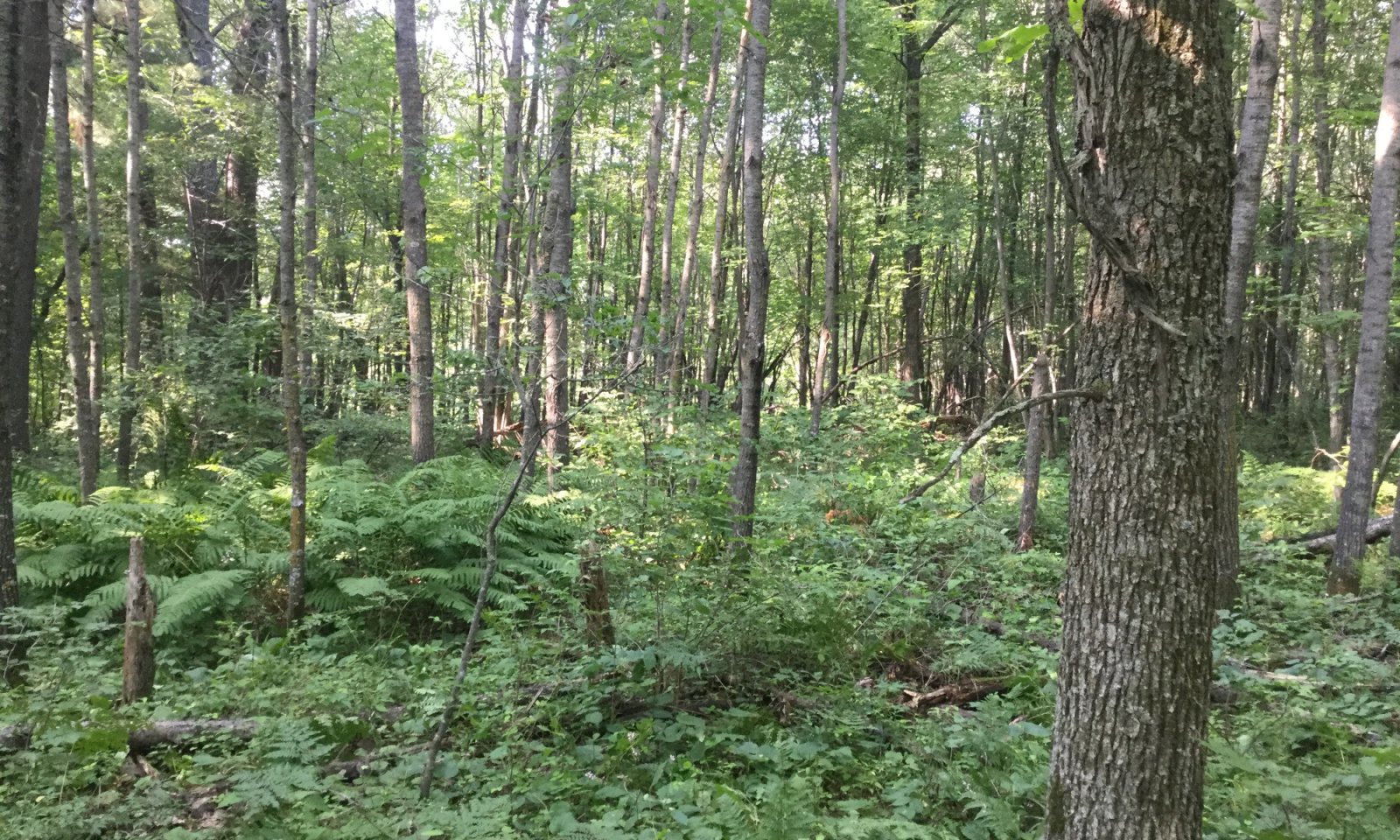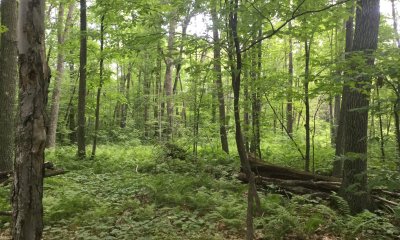
Moist Clayey Lowland
Scenario model
Current ecosystem state
Select a state
Management practices/drivers
Select a transition or restoration pathway
-
Transition T1A
Stand replacing disturbance that includes fire.
More details -
Transition T1B
Removal of forest cover and tilling for agricultural crop production.
More details -
Restoration pathway R2
Deciduous forest community is slowly invaded by Black ash and Sugar maple as seed source allows.
More details -
Transition T2A
Removal of forest cover and tilling for agricultural crop production.
More details -
No transition or restoration pathway between the selected states has been described
Target ecosystem state
Select a state
Description
The reference plant community is categorized as mesic to wet-mesic forest community dominated by Red maple. White pine is a common associate and scattered oaks may be present where opening existed for their establishment. Sugar maple and Basswood are not common, but may appear. Shrub layers are usually poorly developed or altogether absent on this ES and may contain hazelnut (beaked and American) service berry, rhubus species, bush honey suckle, and blueberries. Ground flora is not well developed but likely contains sedges, ferns (interrupted, lady, bracken), and hog peanut.
Submodel
Description
Post disturbance pioneer community of aspen, white birch, and red maple with mixtures of other species from available seed sources are common in this state. This state can have broad variation depending on what seed sources are available as these sites readily supply water and nutrients in quantities that many species can thrive with. Depending on age and tree species composition the shrub and herb layer in this state can vary considerably. Namely with the dominance of aspen there is likely to be very little in the shrub layer.
Submodel
Description
Indefinite period of applying agricultural practices. Cropping systems vary on these sites and likely include tillage, row crops, hay or pasture. Agricultural development of these sites could include drainage. Crops likely include alfalfa, corn, soybeans, and hay or pasture.
Mechanism
Major stand-replacing disturbance. Historically, fire was a component in this forest ecosystem though severe blow downs are likely to have occurred as well. Logging starting in the 19th century also causes this transition. These disturbances created the environment suitable for natural regeneration of many shade-intolerant species and for commercial planting.
Mechanism
Removal of forest cover, tilling and application of other agricultural techniques to grow agricultural crops.
Mechanism
Deciduous forest community is slowly invaded by Black ash and Sugar maple as seed source allows.
Model keys
Briefcase
Add ecological sites and Major Land Resource Areas to your briefcase by clicking on the briefcase (![]() ) icon wherever it occurs. Drag and drop items to reorder. Cookies are used to store briefcase items between browsing sessions. Because of this, the number of items that can be added to your briefcase is limited, and briefcase items added on one device and browser cannot be accessed from another device or browser. Users who do not wish to place cookies on their devices should not use the briefcase tool. Briefcase cookies serve no other purpose than described here and are deleted whenever browsing history is cleared.
) icon wherever it occurs. Drag and drop items to reorder. Cookies are used to store briefcase items between browsing sessions. Because of this, the number of items that can be added to your briefcase is limited, and briefcase items added on one device and browser cannot be accessed from another device or browser. Users who do not wish to place cookies on their devices should not use the briefcase tool. Briefcase cookies serve no other purpose than described here and are deleted whenever browsing history is cleared.
Ecological sites
Major Land Resource Areas
The Ecosystem Dynamics Interpretive Tool is an information system framework developed by the USDA-ARS Jornada Experimental Range, USDA Natural Resources Conservation Service, and New Mexico State University.


